Complete Solutions to Solved Examples of chapter WORK, ENERGY & POWER of Class 11 book with complete answers and questions
| Class 11 | PHYSICS |
| Chapter | WORK, ENERGY & POWER |
| DC PANDEY | Solved Examples |
| Number Of Questions | 12 |
| Academic Year | 2023-24 |
In the figure shown, all surfaces are smooth and force constant of spring is `10N//m`. Block of mass (2 kg) is attaced with the spring. The spring is compressed by (2m) and then released. Find the maximum distance `d` travelled by the block over the inclined plane. Take `g=10m//s^(2)`.
 .
.
View SolutionA smooth narrow tube in the form of an arc AB of a circle of centre O and radius r is fixed so that A is vertically above O and OB is horizontal. Particles P of mass m and Q of mass 2 m with a light inextensible string of length (pi r//2) connecting them are placed inside the rube with P at A and Q at B and released from rest. Assuming the string remains taut during motion, find the speed of particles when P reaches B.
 .
.
View SolutionOne end of a light spring of natural length d and spring constant k is fixed on a rigid wall and the other is attached to a smooth ring of mass m which can slide without friction on a vertical rod fixed at a distance d from the wall. Initially the spring makes an angle of `37^(@)` with the horizontal as shown in fig. When the system is released from rest, find the speed of the ring when the spring becomes horizontal.
[ sin `37^(@)` = 3/5]
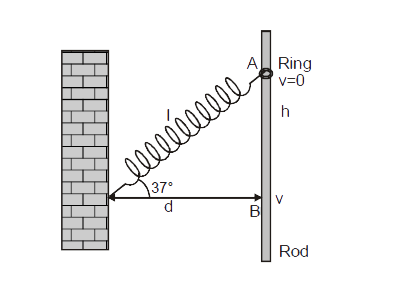
View SolutionIn the adjoining figure, block A is of mass (m) and block B is of mass 2m. The spring has force constant k. All the surfaces are smooth and the system is released form rest with spring unstreched.
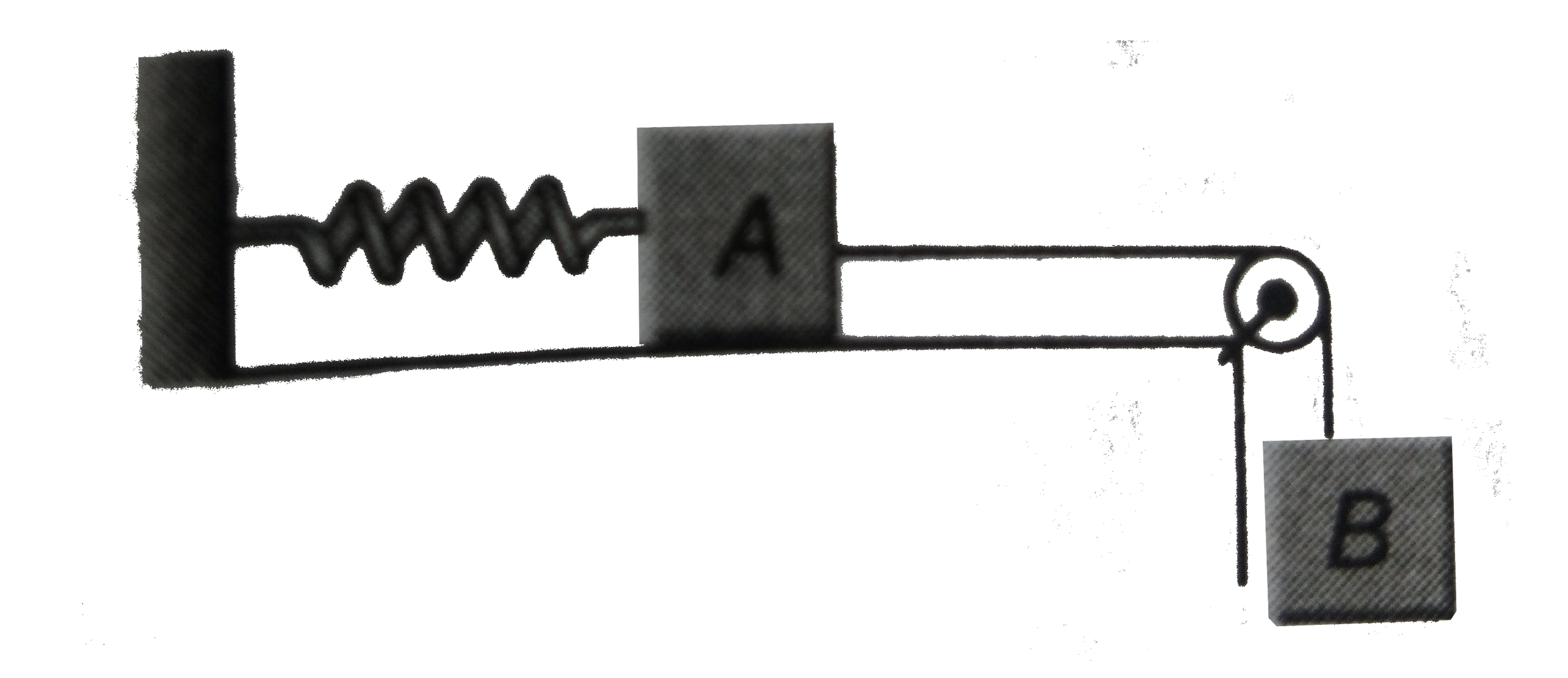 .
.
View Solution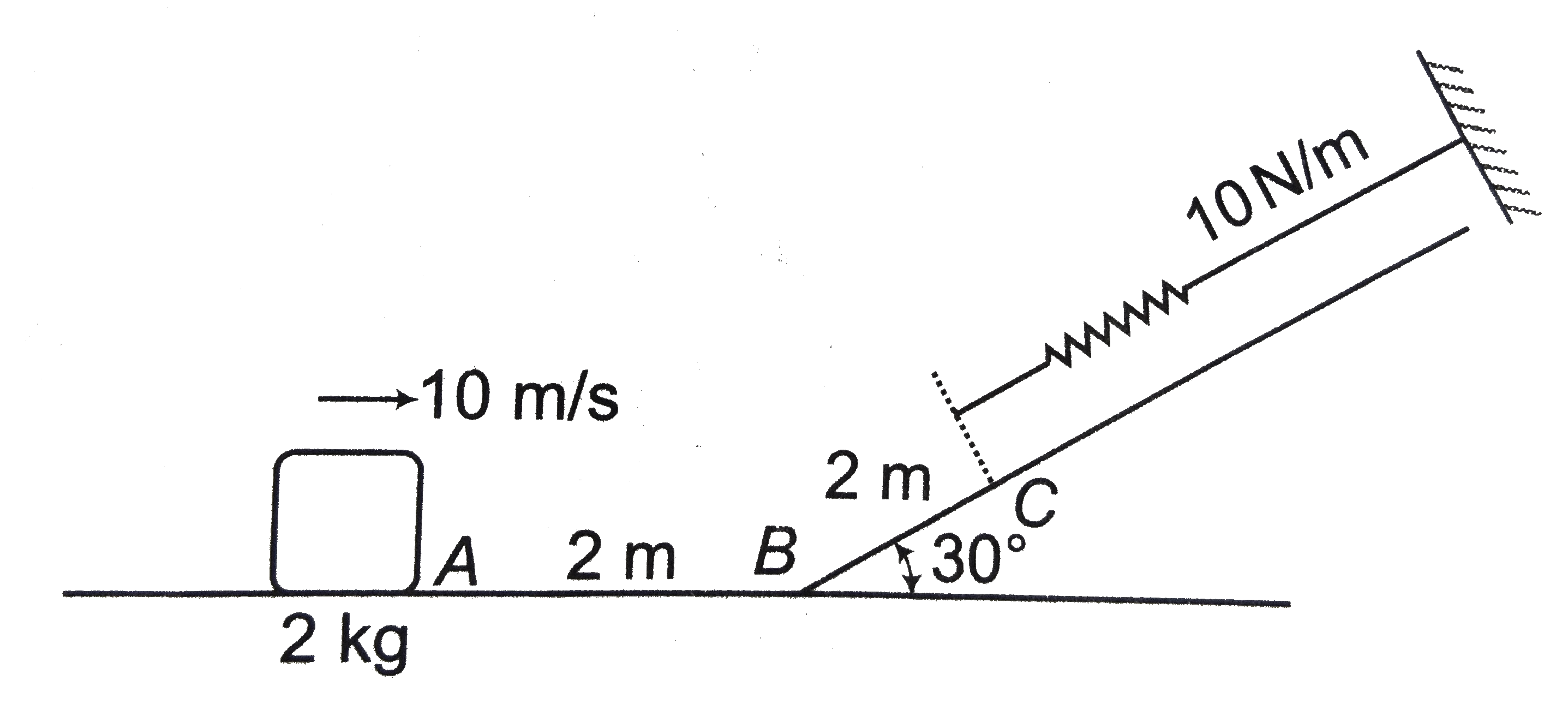 .
.
In the figure shown, `AB = BC = 2m`. Friction coefficient everywhere is `mu=0.2.` Find the maximum compression of the spring.
View SolutionA particle slides along a track with elevated ends and a flat central part as shown in figure. The flat part has a length `l=3m`. The curved portions of the track are frictionless. For the flat part, the coefficient of kinetic friction is `mu_k=0.2`. The particle is released at point A which is at height `h=1.5m` above the flat part of the track. Where does the particle finally come to rest?

View SolutionA `0.5kg` block slides from the point A on a horizontal track with an initial speed `3 m//s` towards a weightless horizontal spring of length `1m` and force constant `2N//m.` The part AB of the track is frictionless and the part BC has the confficient of static and kinetic friction as `0.20` respectively. If the distancences AB and BD are `2m` and `2.14m` respectively, find total distance through which the block moves before it comes to rest completely. `(g=10 m//s^(2) ).
View SolutionA body is desplaced from origin to `(2m, 4m)` under the following two forces:
(a) `F=(2^hati + 6^hatj)N`, a constant force
(b) `F(2x^hati + 3y^(2)hatj)N`
Find word done by the given forces in both cases.
View SolutionA force `F=-k(^hati + x^hatj)` (where k is a positive constant) acts on a particle moving in the `x-y` plane. Starting from the origin, the particle is taken along the positive x-axis to the point `(a,0)` and then parallel to the y-axis to the point `(a,a)`. The total work done by the force F on the particle is
(a) `-2ka^(2)` , (b) `2ka^(2) , (c)`-ka^(2)` , (d) `ka^(2)`
View SolutionA body is displaced from prigin to (1m,1m) by force
`F=(2yhati + 3x^(2)hatj)` along two paths
(a) `x=y` (b) `y=x^(2)`
Find the work done along both paths.
View SolutionA particle, which is constrained to move along x-axis, is subjected to a force in the some direction which varies with thedistance x of the particle from the origin an `F (x) =-kx + ax^(3)`. Here, k and a are positive constants. For `x(ge0,` the functional form of the potential energy (u) U of the U (x) the porticle is.
(a)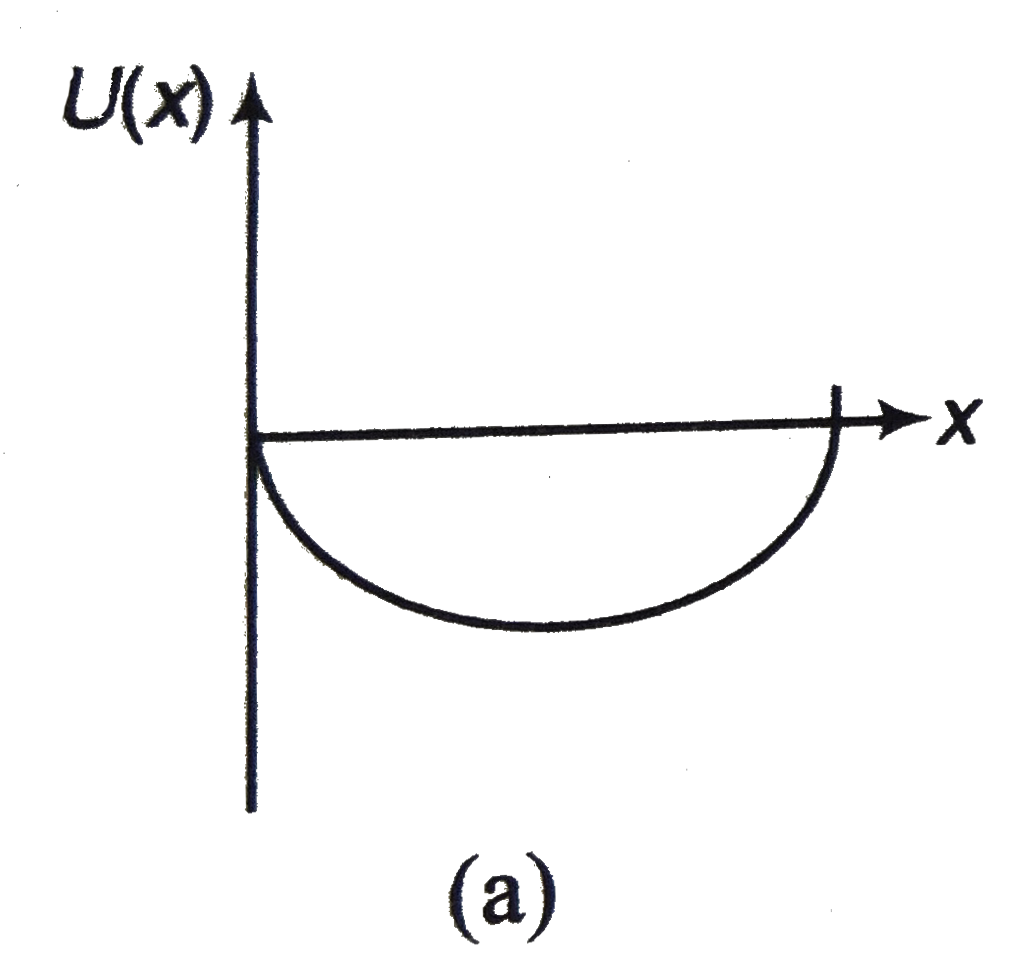 , (b)
, (b)  , (c)
, (c) 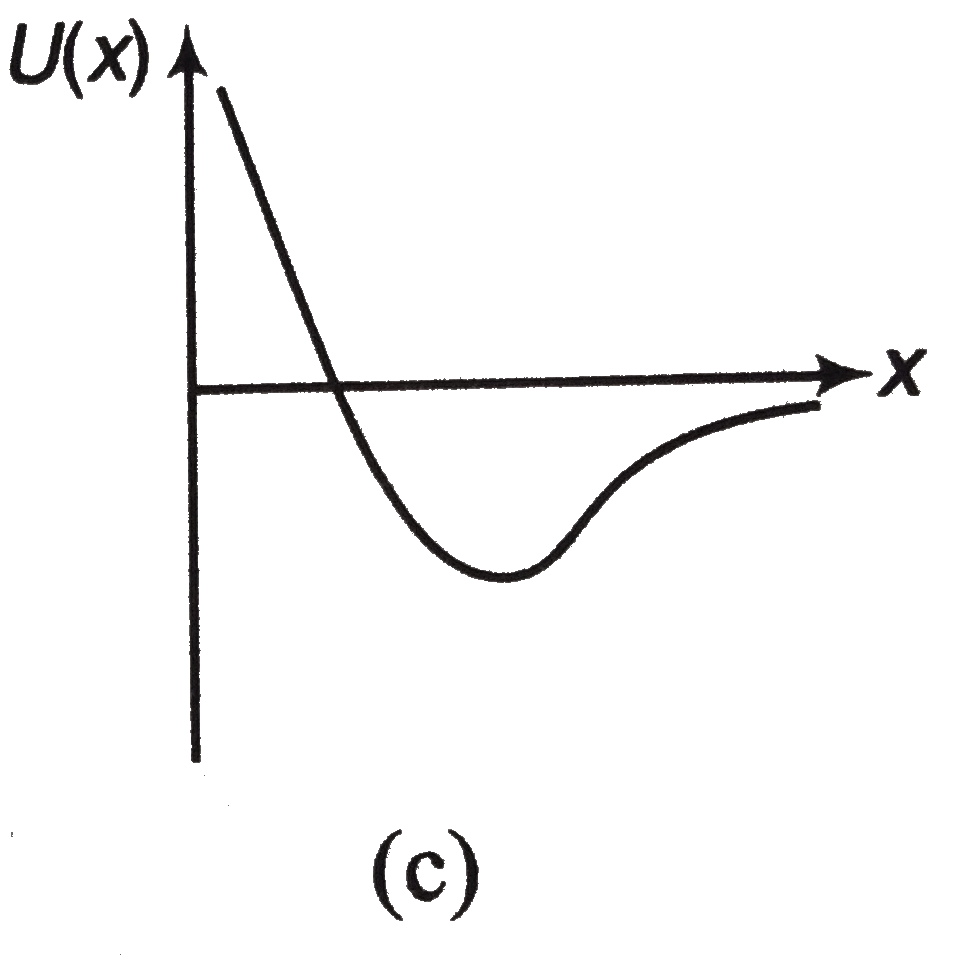 , (d)
, (d)  .
.
View SolutionA particle is placed at the origin and a force F=Kx is acting on it (where k is a positive constant). If `U_((0))=0`, the graph of `U (x)` verses x will be (where U is the potential energy function.)
View Solution
Solved Examples questions and complete solutions for chapter WORK, ENERGY & POWER of DC PANDEY PHYSICS (HINGLISH) of Class 11